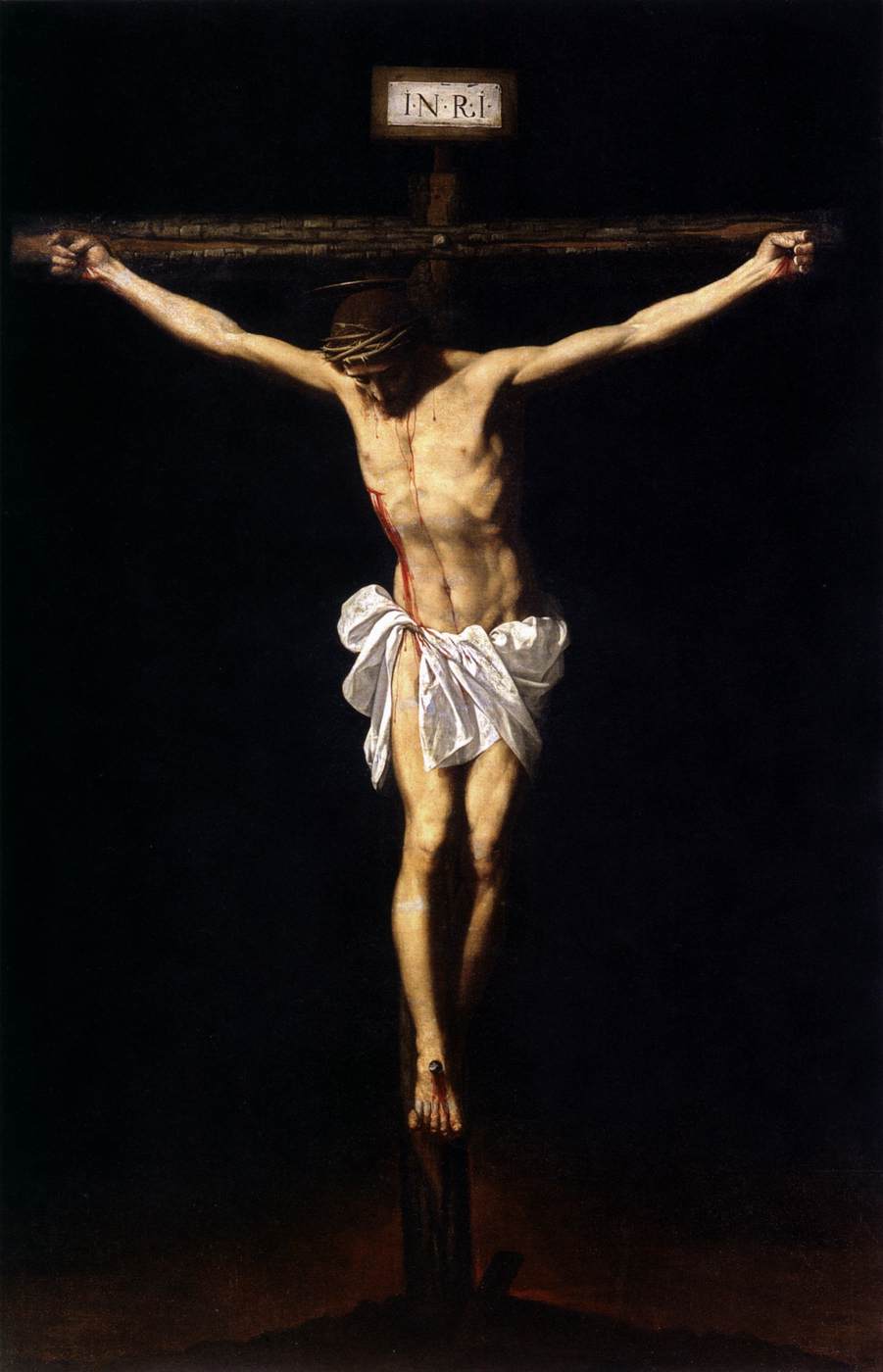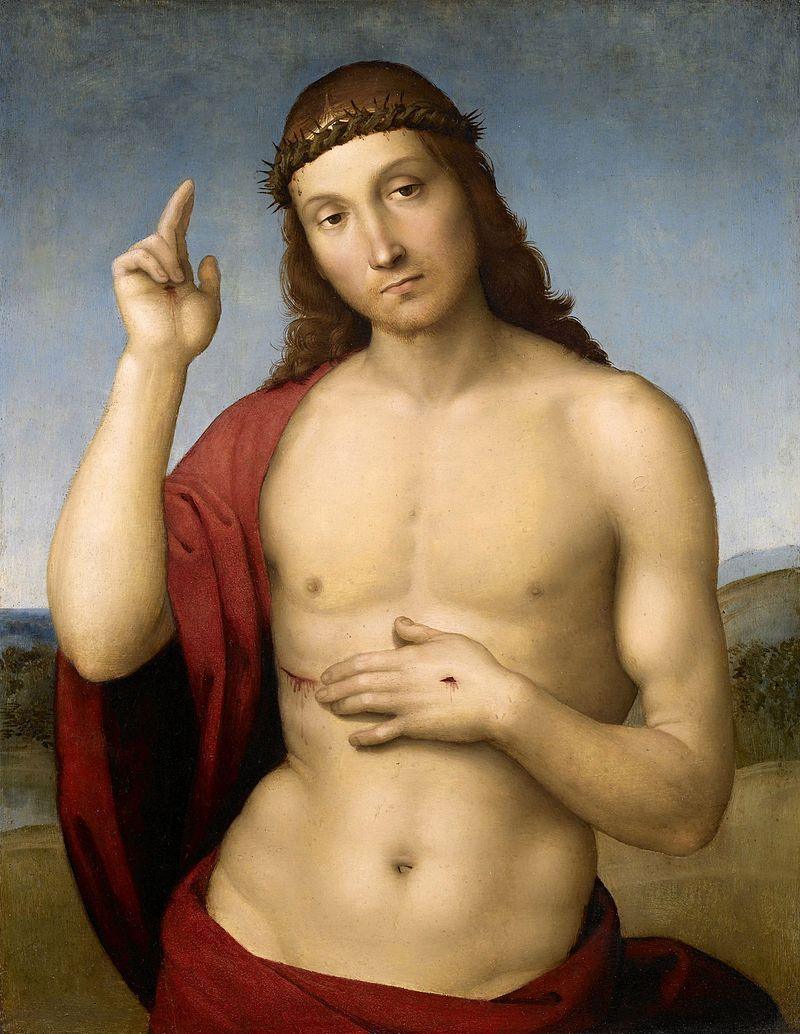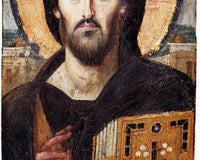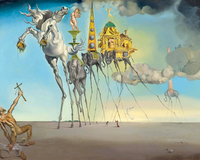Art goes far beyond paintings, and it is solemnly distinguished in the architecture bequeathed by revered artists.
Once home to kings and emperors, to stories of romance and intrigue that inspired writers like Shakespeare, today these opulent royal residences offer the opportunity to immerse oneself in their architectural splendor and rich history. Despite the years, they remain some of the world's most popular tourist destinations.
Kuadros has wanted to create for our followers a varied list of the most sumptuous, beautiful, and impressive palaces in the world.
No. 1 The Forbidden City, China

Located in the center of Beijing, The Forbidden City is the largest palace complex in the world, covering 72 hectares. The Forbidden City took 14 years to build and was constructed by more than 1,000,000 workers, including over 100,000 artisans.
Home to 24 emperors who ruled the country for almost 5 centuries, the architecture of the walled complex adheres rigidly to the traditional Chinese geomantic practice of feng shui. The orientation of The Forbidden City, and indeed all of Beijing, follows a north-south axis. Within the complex, all the most important buildings, especially those along the main axis, face south to honor the sun.
The buildings and the ceremonial spaces among them are arranged to convey an impression of great imperial power while reinforcing the insignificance of the individual. This architectural concept is reflected in the smallest details: the relative importance of a building can be judged not only by its height or width but also by the style of its roof and the number of figures perched on its ridges.
The Forbidden City was designated a UNESCO World Heritage Site in 1987. The film The Last Emperor (1987), which depicts the life of Puyi, was filmed there. Today, more than 14 million people visit this architectural wonder annually.
No. 2 The Grand Kremlin Palace, Russia

The Grand Kremlin Palace is a unique architectural complex and a famous monument in the city of Moscow.
It used to serve as private chambers for emperors and their families. With its authentic furnishings, a throne, and luxurious interiors and murals, the palace never fails to impress with its beauty and grandeur.
The Grand Kremlin Palace was once the residence of the tsar in Moscow. Its construction involved the demolition of the previous baroque palace on the site, designed by Rastrelli, and the Church of St. John the Baptist.
Today it serves as the grand residence of the President of Russia. The palace is only open for guided tours according to a schedule approved in advance by the Federal Protective Service.
The Grand Kremlin Palace is a UNESCO World Heritage Site.
No. 3 Alhambra, Spain

Alhambra, palace and fortress of the Moorish monarchs of Granada, Spain.
The name Alhambra, which means "the red" in Arabic, probably derives from the reddish color of the rammed earth used to construct the outer walls.
The origins of the Alhambra are shrouded in mystery. The first references to construction in the area appear in the 9th century, but it is believed that the buildings may have stood since Roman times. In its current form, it largely dates back to the 13th and 14th centuries when the rulers of Granada transformed it into a fortified palace. After the Reconquista (Christian reconquest) of 1492, its mosque was replaced by a church and Emperor Charles V demolished a wing to make way for the enormous Renaissance building that still bears his name.
In the early 19th century, French Napoleonic forces destroyed part of the palace and attempted to blow up the entire site. Restoration work began in the mid-1800s and continues to this day. The most famous structures of the Alhambra are the three original royal palaces.
The palace and grounds of the Alhambra are situated in a place of rare natural beauty. The plateau on which the palace was built overlooks the Albaicín neighborhood of the old Arab city of Granada. At the base of the plateau, the Darro River flows through a deep gorge to the north. The park outside the palace, Alameda de la Alhambra, was planted by the Moors with roses, oranges, and myrtles. However, its most characteristic feature is the dense wood of English elms brought there in 1812 by the Duke of Wellington during the Peninsular War.
However, more profoundly, this is a place for reflection. Given the beauty, care, and details found in the Alhambra, it is tempting to imagine that the Nasrids planned to stay here to live forever.
It is ironic to see throughout the complex in the carved stucco, the words "... not victor, but God" left by those who once conquered Granada, only to be conquered themselves. It is a testament in the Alhambra that the Catholic monarchs who besieged and finally took the city left this complex largely intact.
No. 4 Palace of Versailles, France

Versailles was originally a hunting lodge, built in 1624 by Louis XIII. His successor, Louis XIV, expanded the site to make it one of the largest palaces in the world and, since 1682, used it to control France through absolute rule.
"To the imagination of the public, Versailles is the epitome of opulence," said writer Louise Boisen Schmidt. The palace represents a period in French history of France's rise as a center of fashion and power.
Versailles was one of the largest theaters of European absolutism, as well as the dramatic and bloody decline of the monarchy.
In 1789, the French Revolution forced Louis XVI to abandon Versailles for Paris. The Palace would never again be a royal residence and was assigned a new role in the 19th century, when it became the Museum of French History in 1837 by order of King Louis-Philippe, who ascended to the throne in 1830.
Located about 16 kilometers southwest of Paris, the palace is next to the settlement of Versailles. The city was little more than a village before becoming the seat of royal power. By the time of the French Revolution, it had a population of over 60,000 people, becoming one of the largest urban centers in France.
Louis XIV entrusted Andre le Notre with the design and development of his famous gardens, which would later be known as a model of exceptional landscaping worldwide. André Le Nôtre took 40 years to complete them.
Versailles played a role during World War I. The most important related event that occurred in the palace during this period was on June 28, 1919, when the Treaty of Versailles was signed in the Hall of Mirrors. The treaty effectively ended what is known as the Great War while affirming the defeat of Germany.
Since 1904, the Palace has also served as the backdrop for nearly 200 films and has been designated a UNESCO World Heritage Site, being one of the greatest achievements of French art in the 17th century.
No. 5 Topkapi Palace, Turkey

The construction of Topkapi Palace was carried out in 1453 by Sultan Mehmed II in Istanbul. It is the largest and oldest palace in the world that has survived to this day.
Around 30 sultans ruled from Topkapi Palace for nearly four centuries during the 600-year reign of the Ottoman Empire.
The palace covers a vast area of 173 acres, protected by enormous walls. The different craftsmanship, tiles, architectural styles, and jewels (such as the famous diamond of a well-known spoon maker) displayed in Topkapi Palace reflect the richness of Turkish art and the blending of cultures from different countries.
The immense Topkapi Palace housed between 1,000 and 4,000 inhabitants, including up to 300 in the harem. It is situated on the acropolis, the site of the first settlement in Istanbul, showcasing a stunning view of the Golden Horn, the Bosphorus, and the Sea of Marmara.
Topkapi is the subject of colorful stories not found in most museums around the world. Lustful sultans, ambitious courtiers, beautiful concubines, and intriguing eunuchs lived and worked here between the 15th and 19th centuries when it was the court of the Ottoman Empire. A visit to the opulent pavilions of the palace, the treasure filled with jewels, and the extensive harem offers a fascinating insight into their lives.
The treasury part of the Topkapi Palace Museum is the richest collection in the world because, instead of masterpieces of Turkish jewelry art, there is a mix of art from other countries such as the Far East, India, and Europe. In this section, authentic and original pieces are displayed. It consists of four rooms, and each room reflects different pieces. One of the most valuable pieces is Spoon Maker. The 86-carat Spoon Maker diamond (or Pigot), one of the most famous diamonds in the world.
Some experts consider, however, that the palace today is lax regarding the security and preservation of the works, pointing out that the palace lacks climate-controlled rooms or storage and is a "security nightmare."
No. 6 Neuschwanstein Castle, Germany

King Ludwig did not get to see his precious castle completed. He died before a throne could be installed in the Byzantine-style throne room.
Inspired by Wagner's operas, Ludwig intended to live out his romantic vision of a solitary life there, and even commissioned designers to work on the palace to make it more theatrical.
In 1866, Bavaria, allied with Austria, had lost a war against the expansion of Prussia, forcing it to accept a "defensive and offensive alliance," which removed the king's right to command his army in case of war. Since 1866, therefore, Ludwig II was no longer a sovereign ruler. This limitation was the greatest misfortune of his life.
In 1867, Ludwig II began to plan his own kingdom, in the form of castles and palaces, where he could be a true king. His reputation as an eccentric and solitary king makes it easy to see why Neuschwanstein is so often called "the fairy tale king's castle."
In a letter to his friend, German composer Richard Wagner, Ludwig II said that his intentions in Neuschwanstein were "to reconstruct the ancient ruin of Hohenschwangau castle... in the authentic style of the ancient castles of the German knights." He described "guest rooms with a splendid view of the noble Säuling, the Tyrolean mountains, and far from the plain"; and spoke of a singer's hall and a wide castle courtyard. "This castle will be in every sense more beautiful and habitable than Hohenschwangau," Ludwig II told Wagner.
Despite the king's grand plans, only 14 rooms are currently completed and open to visitors. During the guided tour of Neuschwanstein Castle, visitors will have access to the cave-like grotto, the king’s room, and the Singer's Hall, among others.
Ludwig's dressing room includes the magnificent ceiling painting and murals that illustrate the works of poets Walther von der Vogelwide and Hans Sachs. The entire room is finished in rich gold and violet silks.
It is rumored that Neuschwanstein Castle, with its white limestone façade and deep blue towers, is the real-life inspiration for the castle in Disney's classic Cinderella, released in 1950. The resemblance, after all, is striking. But there is another Disney castle that bears a strong resemblance to Neuschwanstein, and that is the Sleeping Beauty Castle in Disneyland. Before Walt Disney began to build his Californian theme park, he and his wife took a trip to Europe which included a stop at Neuschwanstein.
No. 7 Mysore Palace, India

Also known as Amba Vilas Palace, this is the former palace of the royal family of Mysore, which remains the official residence of the Wadiyar dynasty and the seat of the Kingdom of Mysore. It was constructed in 1912 for the 24th Governor of the Wodeyar dynasty and ranks among the largest palaces in the country.
The modification and construction of new parts of the current Mysore Palace took place between 1897-1912. It contains a mix of Indo-Saracenic, Hindu, Muslim, Rajput, and Gothic architectural styles that give it a royal quality. It is also surrounded by a large garden, illuminated by more than 10,000 bulbs during the Dasara festival in September.
The construction of Mysore Palace was orchestrated by Maharaja Krishnaraja Wadiyar IV, whom Mahatma Gandhi referred to as "Rajarishi" (holy king). The construction cost was estimated at around USD$ 30 million adjusted for inflation, being completed in 1912. It was then expanded by his son and the last Maharaja of Mysore, Maharaja Jayachamaraja Wadiyar.
The three-story stone building, made of fine gray granite, with dark pink marble domes, has a façade with several expansive arches and two smaller arches flanking the central arch, which is supported by tall pillars. Above the central arch is a sculpture of Gajalakshmi, the Goddess of wealth, prosperity, fortune, and abundance with her elephants.
With the Chamundi hills on its east side, the sight of Mysore Palace is a charming show for the eyes.
Needless to say, it is the second most visited historical monument by local and foreign tourists after the Taj Mahal.
No. 8 Chambord Castle, France

It is the second most visited castle in France after Versailles, being a masterpiece of French Renaissance architecture.
The Loire Château de Chambord was built by Francis I as a royal hunting lodge, but it became the largest Renaissance castle in the Loire Valley.
The royal hunting lodge Château de Chambord was initiated in 1519 by King Francis of the Valois. It was favored by hunting-enthusiast kings like Henry II and Louis XIV. Although it was never fully completed, it is now as impressive as when it amazed Emperor Charles V.
The dimensions of Chambord are extravagant by any measure: 156 meters long and up to 56 meters high. The 426 rooms are complemented by 282 chimneys and 77 staircases. More than 800 carved columns keep it all together.
The history has not officially recorded the name of the architect responsible for the castle, but the influence of Leonardo da Vinci, whom Francis invited to live in France as "the king's first painter, architect, and engineer," is undeniable. That central staircase, the innovative ventilation scheme, and the sealed double well toilet system clearly bear his genius mark.
In the spring of 2017, Chambord renovated its grand gardens. 600 trees, 800 shrubs, 200 roses, and 15,250 plants filled the borders in addition to an immense lawn of thousands of square meters. This gardening bombardment followed 16 years of study for the restoration of nearly identical gardens created during Louis XIV's reign. They are the definition of magnificent in petals and leaves.
The Château de Chambord park is as vast as the interior of Paris. It is the largest enclosed park in Europe: 5,440 hectares surrounded by 32 kilometers of walls. It is home to an exceptional variety of flora and fauna and there are several ways to discover its beauty: on horseback, by bicycle, in a carriage, or in a 4X4. When the weather is good, you can follow over 20 kilometers of trails that allow you to explore the enchanted forests.
Eventually, Chambord became national property in 1930. When World War II broke out, the palace housed several works of art from the Louvre, including the Mona Lisa and Venus de Milo. As a national monument, it is in beautifully restored condition but, as in any old house, maintenance work continues ceaselessly.
The Château de Chambord was inscribed on the UNESCO World Heritage List in 1981.
No. 9 Schönbrunn Palace, Vienna


At the end of the 17th century, Emperor Leopold commissioned the Baroque architect Johann Bernhard Fischer von Erlach, who had received his training in Rome, to design an imperial hunting lodge for his son, the crown prince Joseph, who would later become Emperor Joseph I.
One of the most popular cultural monuments in Vienna, the name means "beautiful spring," this grand palace has 1,441 different rooms. The sculpted garden in front of Schönbrunn Palace also makes this site one of exceptional beauty.
After the fall of the Habsburg monarchy in November 1918, the palace became the property of the newly founded Republic of Austria and was preserved as a museum.
The gardens and the palace have been the site of many films and television productions from 1950 to the present.
The Austrian 10 euro coin minted in 2003 featured this grand palace on its face. The Palace is undoubtedly one of Austria's most important cultural assets, and since the 1960s has been one of Vienna's top tourist attractions, attracting millions of visitors each year.
At the twentieth session of the World Heritage Committee held in December 1996, Schönbrunn Palace was included in the list of UNESCO World Heritage Sites.
No. 10 Peterhof Palace, Russia

The ornate Peterhof Palace is sometimes known as the "Russian Versailles" and the "capital of fountains."
Peter the Great had the palace complex built as his glorious seaside residence, although he preferred the modest Monplaisir Palace to the main imperial palace.
The palace used to be the official summer residence of the imperial court. Emperor Peter the Great was installing Peterhof facing the sea coast as a kind of monument to Russia's naval victories. The building has three stories, is yellow, and stands atop the natural hill above the lower garden. The façade is nearly 331 meters wide. The palace was modestly decorated in "Petrine Baroque style."
The Grand Palace became the site for the official life of the court, receptions, and celebrations. The gala halls of the palace extend one after the other in the suite of rooms. The most striking feature of all the interiors by Rastrelli is the gilded wood carving. The main staircase is luxuriously decorated with carved sculptures made of lime, symbolizing the seasons of the year. The ceiling painting glorifies Empress Elisabeth, allegorically painted as the goddess of spring.
The Grand Cascade is inspired by one built for Louis XIV at his Château de Marly, which is also commemorated in one of the park's outbuildings. At the center of the cascade is an artificial grotto with two floors, faced inside and out with carved brown stone.
There are 64 fountains whose waters flow into a semicircular pool, the terminus of the sea canal lined with fountains. In the 1730s, the grand Samson fountain was placed in this pool. It depicts the moment when Samson tears apart the jaws of a lion, representing Russia's victory over Sweden in the Great Northern War, and it is doubly symbolic. The lion is an element of the Swedish coat of arms, and one of the great victories of the war was won on the day of Saint Samson. From the lion's mouth, a vertical jet of water shoots up to 20 meters high, the tallest in all of Peterhof.
Although Peterhof fell into ruin after World War II, it has been carefully restored. Today's visitors can stroll through the Lower Park, where Monplaisir and the Hermitage are located, the Upper Garden with the grand Neptune Fountain, the Grand Cascade, and the Main Palace.
In 2003, St. Petersburg celebrated its 300th anniversary. As a result, much of the building and statues in Peterhof have been restored, and golden works abound.
KUADROS ©, a famous painting on your wall.









